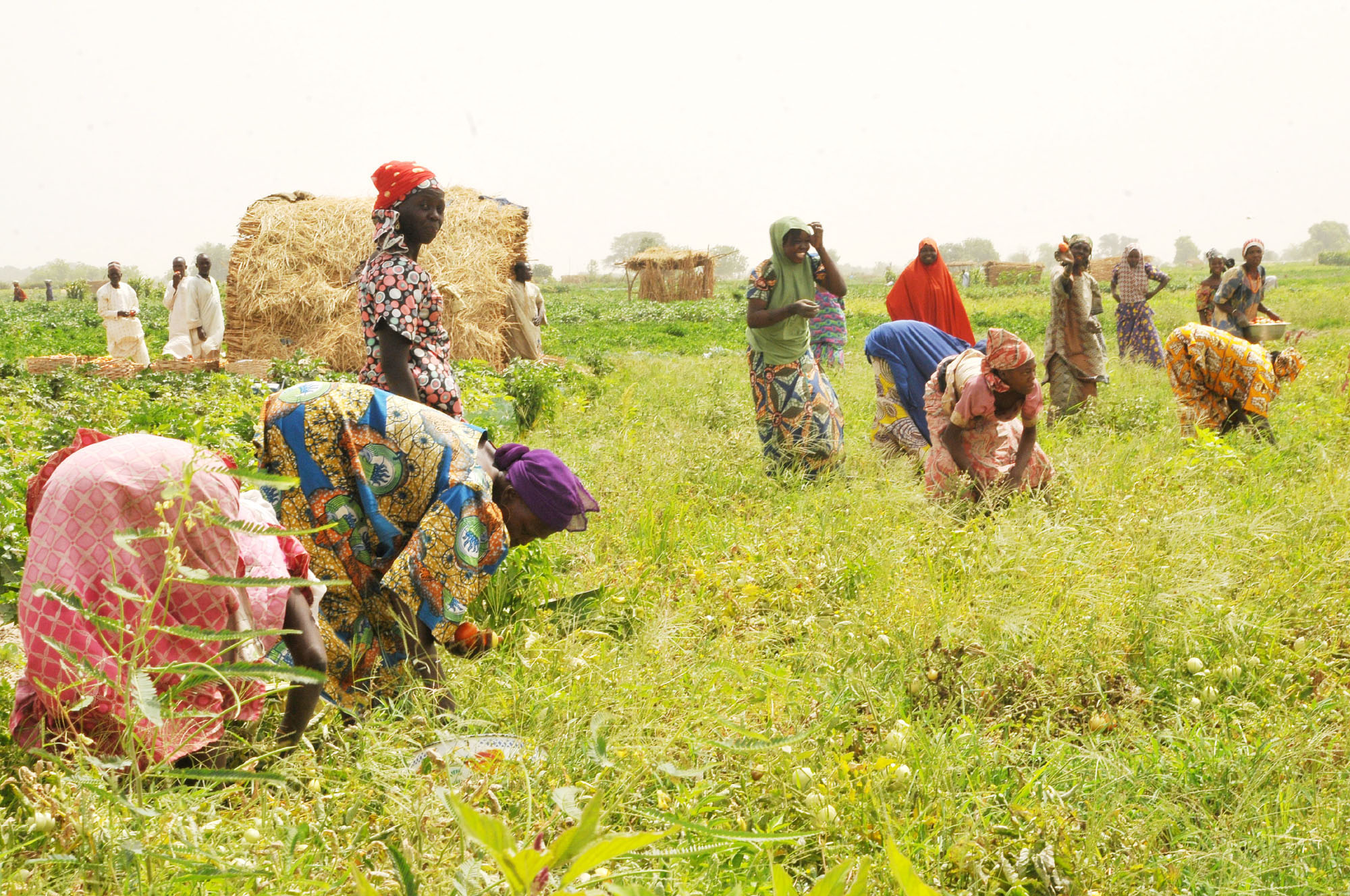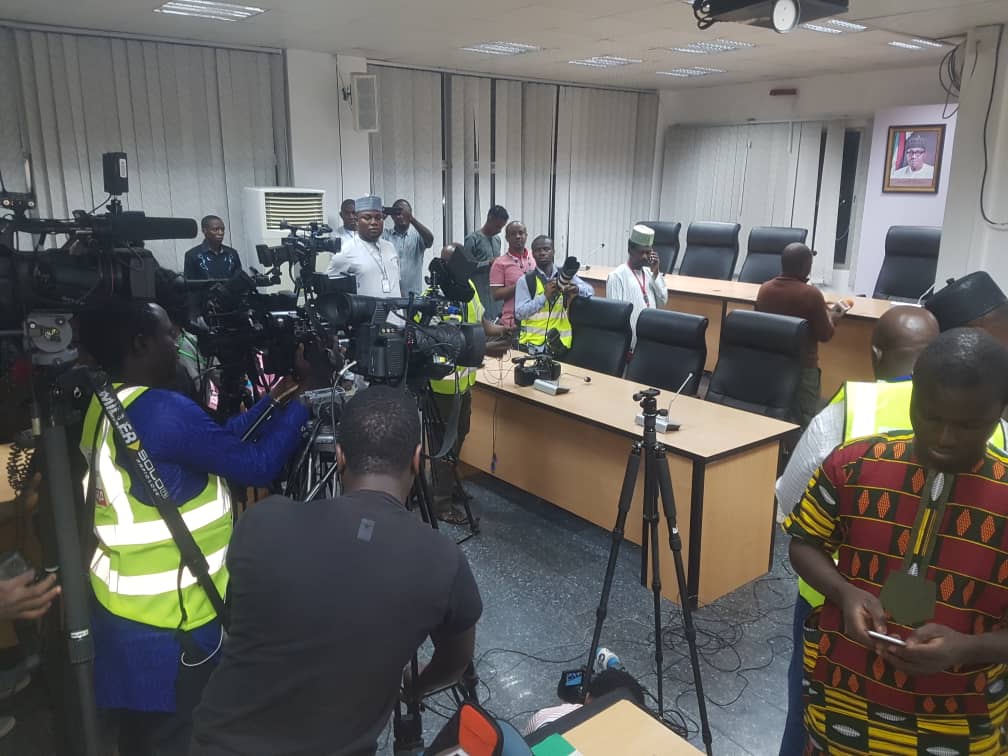President Muhammadu Buhari has made transforming agriculture a centre piece of his economic strategy. The president got it right because agriculture holds the key to Nigeria’s economic breakthrough. But is his government implementing the right policies and programs that will unleash the productivity gains that Nigeria desperately needs?
Agriculture is important because it provides the most basic and vital human need. It is also important for poverty reduction because it employs almost 50% of Nigerians, who are mainly involved in subsistence farming. Therefore, successfully transforming agriculture and increasing yields and productivity will increase the income of a large number of Nigerians, with positive impact on poverty reduction. Ultimately, success in the transformation will lead to fewer people working in agriculture as has happened in developed countries and fast growing countries like China. The excess labour moves from agriculture into the more productive manufacturing and services sectors.
The movement of workers from agriculture to manufacturing and services is supported by the increase in demand for manufactured goods and services by farmers, as a result of their higher incomes following the increase in productivity. A more productive agriculture also reduces the cost of food, which positively impacts social and political stability. Furthermore, it reduces the price of agricultural inputs required in manufacturing, thereby making made in Nigeria processed foods and beverages more internationally competitive. Finally, a more productive agriculture will provide the savings and foreign exchange required to drive the economy.
Transforming agriculture is a low hanging fruit for economic development and yet Nigeria is unable to increase growth in agricultural output in the last five years, despite official pronouncements. China transformed its agriculture within a year of commencing reforms in 1979. The rate of growth of agricultural output increased from an annual rate of 2.9% in 1978 to an annual rate of 7.6% from 1979 to 1984. The acceleration of growth in agriculture led to increase in per capita rural income with a significant proportion of the higher income saved in banks or invested in rural enterprises. These investments and higher demand for manufactured goods and services led to share of employment in agriculture to fall from 62% in 1978 to 53% in 1985 and to 25% by 2019. Thus, within five years – 1979 to 1984 – a major transformation was well under way. Unfortunately, no such transformation has happened in Nigeria five years after Buhari became president.
Advertisement
According to the National Bureau of Statistics (NBS), agriculture grew annually by an average of 4.53% between 2010 and 2014. However, it grew by only an average of 3.15% between 2015 and 2019. Data from the Food and Agriculture Organisation (FAO) corroborates the NBS data. For example, according to the FAO, rice production grew from 4.6 million tonnes in 2011 to 6 million tonnes in 2014, an increase of 30.4%. Meanwhile, it grew from 6 million at the end of 2014 to 6.8 million tonnes in 2018, an increase of 13.3%. Maize production grew from 8.88 million tonnes in 2011 to 10.1 million tonnes in 2014 an increase of 14%. However, it grew from 10.1 million at the end of 2014 to 10.2 million tonnes in 2018, an increase of only 1%. Furthermore, despite the President’s push for food self-sufficiency, Nigeria still imported over $12 billion worth of food and agricultural commodities in 2019. The import bill was $11.7 billion in 2014 and $12.5 in 2019. After a drop in 2016, probably due to scarcity of foreign exchange, imports went up in 2019. The reason for the lack of high growth, higher price of grains and increasing imports, is that the main problems affecting agriculture have not been addressed on a scale that will have the desired transformational impact.
In 2003, in Maputo, members of the African Union pledged to increase funding to agriculture to 10% of annual government budget. Nigeria has never achieved this goal and probably never will. For example, allocation to agriculture represented 1.48% of the revised 2020 Federal budget and 1.37% of the proposed 2021 budget. However, increasing agricultural productivity is not only about increasing Federal budget. It is how the money is spent. Nigeria scores an F on how it allocates and spends money to improve agriculture.
A careful review of the budget of Federal Ministry of Agriculture and Rural Development reveals a total lack of focus on which crops, meat and fish to prioritise and support. Indeed, the composition of the budget seems to ignore the Ministry’s prime function, which is to increase agricultural productivity. The Ministry is trying to develop 31 agricultural value chains and yields of crops and not surprising, with little success, given the fragmentation of resources. For example, Vietnam produces rice with almost thrice the yield and maize with twice the yield of Nigerian farmers. Furthermore, the Ministry spends more money on construction required by its 45 parastatals, colleges and institutes, empowerment programs and even solar installations than it does on providing extension services and research to improve yields. For example, the Nigeria Institute of Oceanography and Marine Research plans to spend N2 billion installing solar street lights in Lagos, N500 million for solar in Ogun and N150 million for solar street lights in Bayelsa. That is a total of N2.65 billion, representing 48% of the institute’s 2021 capital budget, is allocated to spending on projects totally unrelated to its core mandate and which will have minimal impact on the productivity of the economy. In fact, going through the budget of the Ministry is an exercise in utter frustration and reveals why, despite trillions of Naira going into capital expenditure, the economy is no better than it was five years ago.
Advertisement
Therefore, improving agriculture needs to start with a change in the mandate of the Ministry to focus only on agriculture and a complete overhaul of the budget of the Ministry. Adding rural development made the Ministry to lose focus and spend time and resources attempting to build rural feeder roads and install street lights. Rural feeder roads should best be left to Local Governments who know where they are needed and who will use local contractors to carry out the works, making it cheaper and more impactful. The main focus of the Ministry should be on developing better yielding seeds, improving productivity and provision of extension services. Furthermore, the Ministry should focus its energy and resources on no more than five crops at a time. Rice, maize (food crops), cashew nuts, cocoa and sesame seeds (cash crops) are good candidates to start with.
There are other reasons, apart from the above, for the poor yields and low productivity in Nigerian agriculture compared to the world average. These include: lack of adequate extension services; low quality of soil, seeds and other inputs; low application of fertiliser; low usage of irrigation; poor storage facilities that increase waste; and insecurity.
Given the proliferation of institutes, it is not surprising that there is an institute for extension services, that is the National Agriculture Extension Research Liaison Services. It is also not surprising, given the suboptimal productivity of agriculture, that the institute has an allocation of only N1.46 billion in the 2021 budget, representing less than 1% of the Ministry’s N179.6 billion 2021 budget. The Ministry’s Headquarters and other institutes under the Ministry have allocated an additional N2.3 billion to extension services, bringing the total allocation to extension services to N3.8 billion representing 2.1% of the total budget for agriculture. This is clearly inadequate, given the role played by extension services in improving yields and productivity.
Therefore, provision of extension services needs to be expanded with higher number of extension workers allocated to each Local Government that is involved in agriculture. This should be done with active collaboration of the State Governments. For example, the Federal Government could provide funding for ten extension workers per Local Government while the State provides funding for an additional ten. Furthermore, each Local Government should have a demonstration farm of at least three hectares. The demonstration farms will be used to show farmers best farming practices in the relevant crops and will provide an opportunity for farmers to share experiences.
Advertisement
There are twenty Research Institutes under the Ministry of Agriculture involved in developing better quality seeds and other aspects of agriculture, yet yields continue to be low due to slow development and adoption of better seeds and poor funding of actual research and development. A way forward is to merge the institutes to no more than six, this will enable better collaboration, knowledge sharing and reduction in cost of administration. The cost savings and additional funds should be allocated to more research and development of better seeds and provision of the seeds to farmers at affordable prices.
Access to fertiliser has improved in the last five years, yet fertiliser application remains low, perhaps due to low income of farmers. Better extension services proposed above will show farmers the benefits of optimal utilisation of fertilizer. Federal and State Governments should work together to find ways to provide additional fertilizer to farmers without distorting incentives.
Adoption of Irrigation is another area Nigeria lags despite availability of water resources. Development of large irrigation infrastructure is under the Federal Ministry of Water Resources. The Ministry of Water Resources should prioritize completion of current irrigation projects rather than creating new ones, leading to so many uncompleted projects, that take decades to complete. Furthermore, the two Ministries (Agriculture and Water Resources) need to collaborate more effectively to develop and promote utilisation of low-cost irrigation. Given the lack of funds and Nigeria’s low adoption of irrigation farming, low cost irrigation is the quickest way forward and has the additional benefit of immediately increasing farmers’ output.
Some will argue that we need more mechanisation in agriculture and the use of more modern technologies. However, experience of other countries indicates that will come at a later stage. Right now, Nigeria needs to get the basics right. That is getting the small holder farmer that has a hectare or less to get more yield out of his or her land by adopting labour intensive farming methods, akin to gardening. This was the secret to unlocking agriculture in Japan, Taiwan and many others.
Advertisement
Ultimately, getting agriculture right, is a detailed oriented hands on process and a necessary first step in transforming the economy, increasing national output and lifting millions out of poverty. Nigeria is yet to get it right and with crude oil losing its allure, the process will not get any easier. Consequently, low economic growth will continue to be our lot, until such a time when our leaders actually get down to doing whatever it takes to transform agriculture. Hopefully, they will, sooner rather than later, so that we don’t have to look back at 2020 as the beginning of a never-ending social and economic nightmare.
Ado is the Founder of Sana’a da Ilmi Foundation, a non-profit dedicated to improving the quality of public education.
Advertisement
Views expressed by contributors are strictly personal and not of TheCable.







